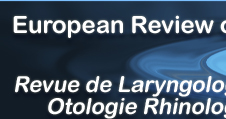 Issue N# 1 - 2018
Issue N# 1 - 2018

AUDIOLOGY
Turner syndrome audiological evaluation with otoacustic emissions
Authors : Carvalho B, Hamerschmidt R, Richter Minhoto Wiemes G, Ramires de Carvalho J. A, Mazanek Santos V, Nunes Lima M, Dacheux de Macedo Filho E. (Curitiba)
Ref. : Rev Laryngol Otol Rhinol. 2018;139,1:9-13.
Article published in english 
Downloadable PDF document english 
Summary :
Objectives: Turner syndrome (TS) is characterized by short stature and hypergonadotrophic hypogonadism, associated with typical somatic features. Although hearing loss was not reported in Henry Turner first description of the disease, it has been brought to attention in the last decades in many studies. But the true nature of this problem is still unknown due to inconsistent data resulting from different study methodology. The purpose of this study is to evaluate hearing of TS girls using Audiometry and Otoacustic emissions, both Distortion product (DPOAEs) and Transient (TOAEs) in the outpatient clinic of a tertiary hospital. Materials and methods: Prospective cross-sectional study of TS girls aging from 6 to 19 years old, who were evaluated and compared to healthy controls with same age and sex. Results: 26 ears (13 girls with TS) were compared to 12 ears (6 controls). TS patients showed in audiometry: Normal hearing in 14 ears, neurosensorial in 3 ears, conductive in seven and mixed in two ears (12 alterations). In the DPOAEs: 19 absent responses (73.1% of cases) in at least one frequency, and in TOAEs: 16 absent responses (61.5%). 15 absent responses in both tests (57.7%). This occurrence was significantly higher than matching controls for age and sex. Conclusion: The presence of auditory alterations in TS patients assessed by OAE was high. They were significantly higher than the control population, and were higher than those present in audiometry. Future research should evaluate these alterations in OAE in patients with normal audiometry.
Price : 12.00 €

|



